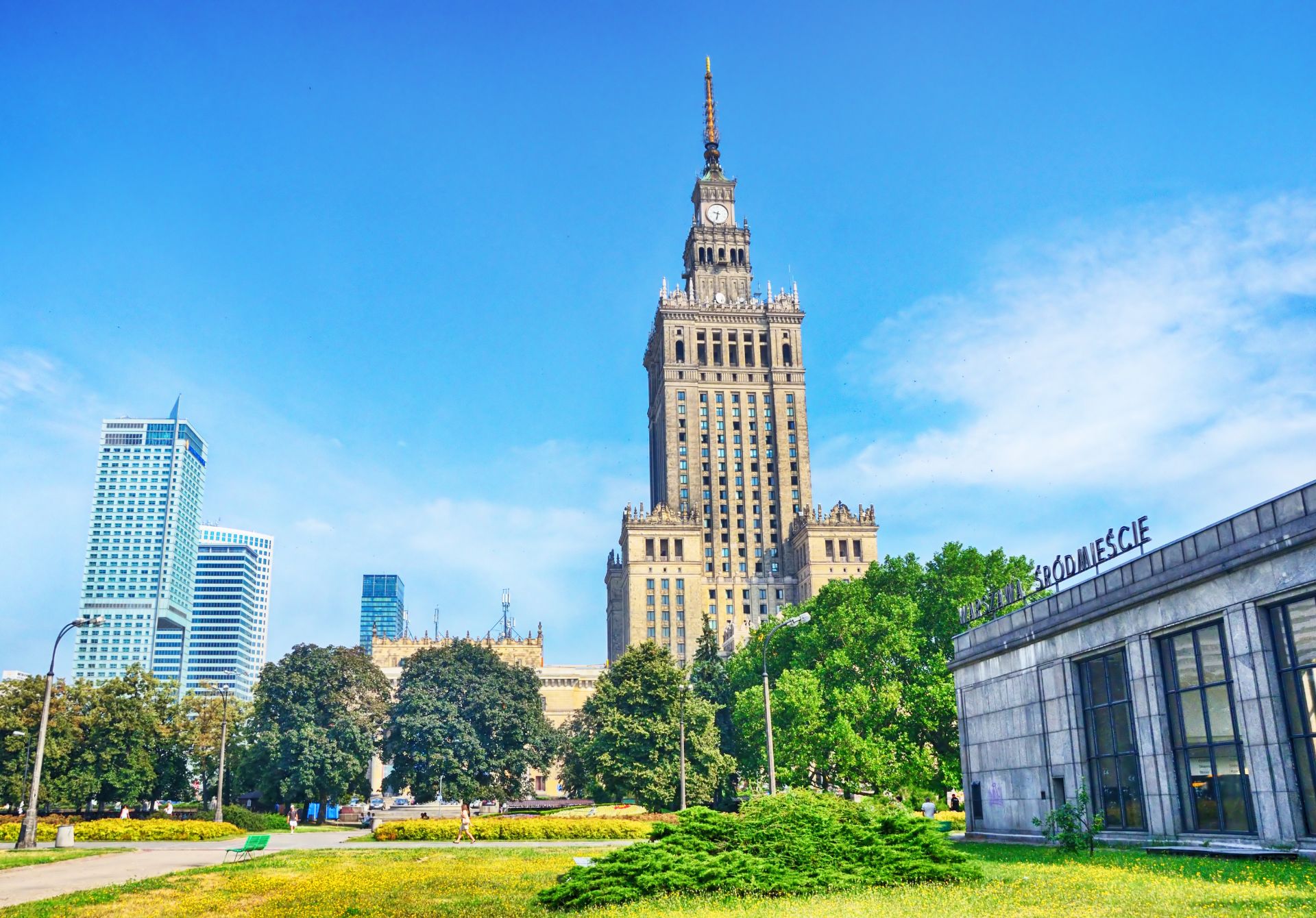Standing tall in the heart of Warsaw, the Palace of Culture and Science is an iconic symbol of Poland’s complex history and its relationship with the Soviet Union. This monumental skyscraper, gifted to Poland by Joseph Stalin in the 1950s, continues to spark debate and fascinate visitors decades after its construction.
Historical Background
Soviet-era Origins
Constructed between 1952 and 1955, the Palace of Culture and Science was presented as a “gift from the Soviet people to the Polish nation.” However, this gift came with strings attached. The building was designed by Soviet architect Lev Rudnev, who drew inspiration from similar skyscrapers in Moscow known as the “Seven Sisters.”
A Symbol of Soviet Influence
At the time of its completion, the palace stood as the second-tallest building in Europe, reaching a height of 237 meters (778 feet). Its imposing presence was a constant reminder of Soviet dominance over Poland during the Cold War era. For many Poles, the building represented oppression and the loss of independence.
Architectural Marvel
Blend of Styles
The Palace of Culture and Science showcases a unique blend of architectural styles, combining elements of Socialist realism, Art Deco, and Polish historicism. Its ornate facade features intricate sculptures and reliefs, while the interior boasts lavish marble staircases, crystal chandeliers, and grand halls.
Impressive Statistics
Some notable figures about the palace include: – Total floor area: 123,084 square meters – Number of rooms: Over 3,000 – Elevators: 16 passenger elevators and 17 service elevators – Construction materials: 40 million bricks and 70,000 cubic meters of concrete
Multifunctional Complex
Cultural and Educational Hub
Despite its controversial history, the Palace of Culture and Science has evolved into a vibrant center for culture and education. It houses: – Four theaters – Three cinemas – Two museums – A multi-purpose concert hall – Numerous offices, bookstores, and scientific institutions
Tourist Attraction
The palace attracts over 600,000 visitors annually. The observation deck on the 30th floor offers panoramic views of Warsaw, making it a popular destination for both locals and tourists. In recent years, the building has also become a venue for various events, including conferences, exhibitions, and concerts.
Controversies and Debates
Symbol of Soviet Oppression
For decades, the palace has been a subject of heated debate in Polish society. Many view it as a painful reminder of Soviet domination and have called for its demolition. In a 2009 survey, 49% of Warsaw residents supported removing the building, while 45% wanted it preserved.
Preservation vs. Demolition
Despite the controversy, the palace has survived numerous attempts to have it torn down. In 2007, it was officially registered as a protected landmark, ensuring its preservation for future generations. Supporters argue that the building has become an integral part of Warsaw’s skyline and identity, transcending its original symbolism.
Modern Significance
Rebranding and Adaptation
In recent years, efforts have been made to rebrand the Palace of Culture and Science as a symbol of modern Warsaw. The building has been illuminated with colorful lights during special events and has hosted contemporary art installations. These initiatives aim to transform its image from a relic of the past to a dynamic cultural center.
Economic Impact
The palace contributes significantly to Warsaw’s economy. It generates revenue through tourism, event hosting, and office rentals. According to a 2018 study, the building’s economic impact on the city is estimated at over 100 million złoty (approximately 22 million euros) annually.
The Palace of Culture and Science stands as a testament to Warsaw’s resilience and ability to adapt. From its controversial beginnings as a symbol of Soviet dominance to its current status as a multifunctional cultural hub, the palace has undergone a remarkable transformation. While debates about its future continue, there’s no denying its significance in shaping Warsaw’s skyline and identity.
As Poland continues to grapple with its complex history, the Palace of Culture and Science serves as a powerful reminder of the country’s past and its journey towards independence and cultural revival. Whether viewed as an architectural marvel or a contentious monument, this iconic structure will likely remain at the heart of Warsaw’s urban landscape for generations to come, sparking discussions about history, identity, and the power of architecture to shape a nation’s narrative.

